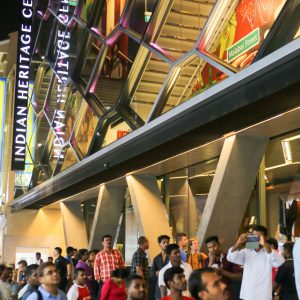Emergence of Singapore as a Pivot for Indian Diasporic and Transnational Networks
March 1, 2021

Contemporary Singapore serves as a centre for both inbound and outbound migration of Indians within Asia and beyond. In ‘Emergence of Singapore as a Pivot for Indian Diasporic and Transnational Networks’ (Routledge Handbook of Indian Transnationalism, 2019) Dr Jayati Bhattacharya (NUS South Asian Studies Programme) examines the evolution of this hub of Indian diaspora and transnational networks from the late colonial period right up to the present day, with the intent of showing how Indians are becoming an increasingly vital part of global connectivity.
The text considers the colonial legacies of divided living spaces along ethnic lines left by the British, and the following period of forced ethnic ratio and balance by the post-Independence PAP government. The Indian diaspora were shown to have been caught within the grand designs of successive governments that sought to control and promote ethnic harmony through enforced segregation and then integration, removing the chance for organic social development.
The Housing Development Board (HDB) public-housing project was noted as one of the key markers that broke down the previously racialised quarters of colonial times, with only heritage sites such as Little India remaining of the older Indian living spaces.
Indian transnational networks are explored within the background of India and Singapore’s respective journeys towards economic modernity, with the turning point of the 1990s highlighted as a crucial decade. Dr Bhattacharya contrasts the disconnection prior to this period, where networks were primarily geared toward upholding cultural values and practices, with the recent influx of highly skilled Indian professionals into Singapore who are “apprehensive of living in India after years of residence in the Western world” but still desire the geographic proximity of home nearby.
The article also conveys potential problems for the future, such as the preservation of regional and caste group identities, and the linguistic differences that separate North and South Indian communities within India itself being transmitted to the diaspora within Singapore.
Read the full article here.
